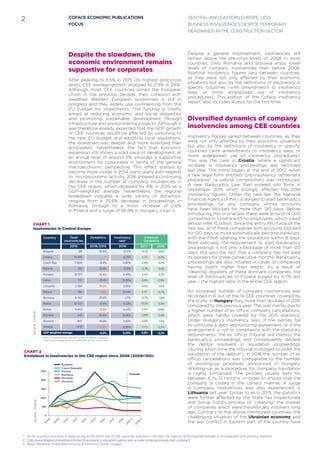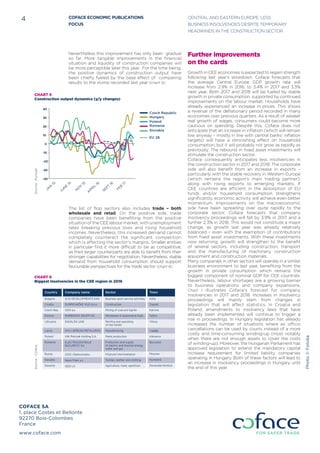Despite a slowdown in GDP growth to 2.9%, business insolvencies in Central and Eastern Europe (CEE) have decreased, with a forecasted further drop of 3.9% in 2017. Sectoral disparities exist, particularly with construction facing challenges while other sectors like pharmaceuticals and IT experienced fewer insolvencies. Political uncertainties and labor shortages continue to pose risks to the region's economic stability.



